#philadelphiahistory
Video
youtube
William Penn - Bio Quotes
#youtube#williampenn#philadelphia#pennsylvania#philadelphiahistory#quaker#toweroflondon#charlesii#debtorsprison#britishhistory#history#throwbackthursday#historicalfigures#greatminds#greatinspiration#bioquotes#biography#quoteoftheday#tinynethertoons#nethertales
0 notes
Text
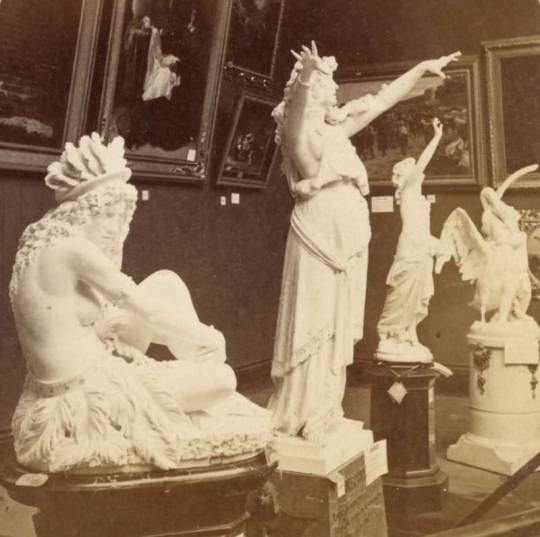
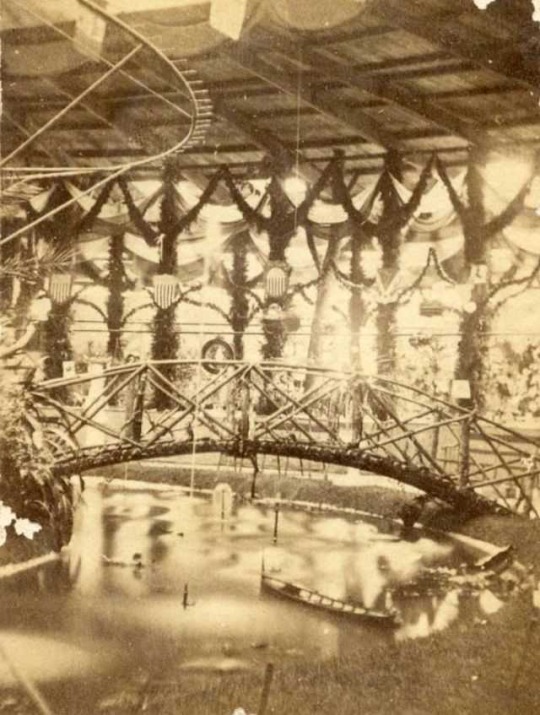

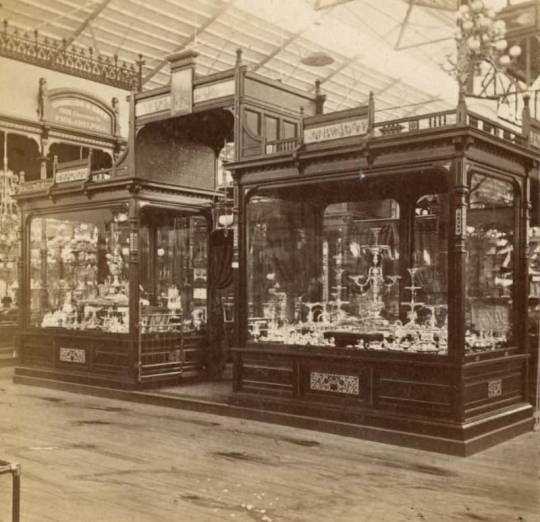
Centennial Exposition of 1876 The First World's Fair held in Philadelphia brought 10 million Visitors
0 notes
Photo

https://www.teepublic.com/t-shirt/23663918-hitchbot This day in #philadelphiahistory. A robot uprising was thwarted in #philly when @hitchbot was destroyed. #robot #robots #robotuprising Www.teepublic.com/user/bobdix #illustration #history #hitchhike @farfarraway0444 (at Philadelphia, Pennsylvania) https://www.instagram.com/p/CguGHESOnl8/?igshid=NGJjMDIxMWI=
0 notes
Text

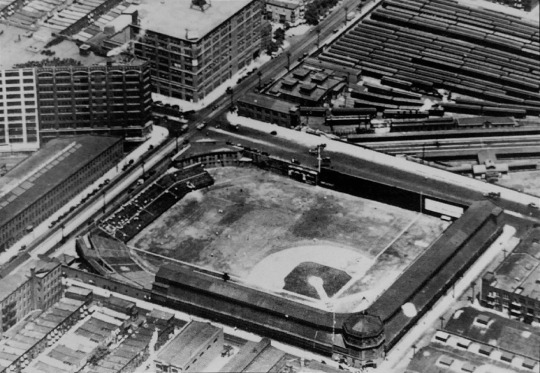
On This Day in Baseball History June 30, 1938: The Philadelphia Phillies home park of the Baker Bowl hosted its final Major League baseball game with the a 14-1 drubbing of the Phillies by the New York Giants.
Built in 1887, ballpark had unique dimensions to fit the shape of the stadium. The outfield was 342 feet to left field, 408 feet to center field, 300 to right center field and 281 feet to right field. Right center and right field has a 40 foot high wall which was later increased to 60 feet.) For a point of comparison, Fenway Park's Green Monster is 37.5 feet tall.
The Phillies played the rest of the 1938 season at Shibe Park aka Connie Mack Stadium and would play there until the end of the 1970 season.
#PhiladelphiaPhillies #BakerBowl #BaseballStadiums #StadiumHistory #PhiladelphiaHistory #BaseballHistory #HistoriaDelBeisbol #YakyūNoRekishi #Baseball #Beisbol #ProYakyū #BaseballSisco
#Philadelphia Phillies#Baker Bowl#Baseball Stadiums#Stadium History#Philadelphia History#Baseball History#Historia del Beisbol#Yakyū No Relishing#Baseball#Beisbol#Pro Yakyū#BaseballSisco
9 notes
·
View notes
Text

The Stevens-Cogdell/Sanders-Venning Collection contains several 19th- and 20th-century portrait photographs of members of the extended Black families descended from the relationship of Richard Codgell, South Carolina merchant and enslaver, and Sarah Sanders, an enslaved woman in his household. The portraits embody an anti-racist, counter archive to contemporaneous collections of racist imagery and caricatures.
Probably a Black family member or friend took this snapshot in the backyard of the residence of Miranda Cogdell Venning, granddaughter of Sarah Sanders. There is both a formalness and candidness to the sitters’ mannerisms in this image taken at the family home. Miranda, probably the woman seated on the hammock, was the first African American graduate of the Philadelphia Girls High School and Normal School. A school principal, she died of tuberculosis one year after this view was taken. She was thirty-eight years old.
M. C. V., June 1899, Venning's Yard, [1116 Fitzwater Street]. Cyanotype. Stevens-Cogdell/Sanders-Venning Collection.
36 notes
·
View notes
Photo

Photo by Al Pocheck. Got to portray the sassy #rebeccafranks yesterday on the anniversary of the Meschianza and I felt so pretty! I got to do a terrific toilette demo and read from Becky’s #burnbook to a curious audience. It’s genuinely fun portraying such a vivacious lover of life that was Becky Franks, she has such an interesting, multifaceted story. I hope to tell her story even more #eastjerseyoldtownvillage #18thcentury #18thcenturydress #18thcenturyfashion #bighairdontcare #powderedhairdontcare #loyalist #meschianza #meangirls #revwar #fashion #womensfashion #signofthegrayhorse #philadelphiahistory #springfashion #summerfashion #grayhorsegirls #historicalhair https://www.instagram.com/p/Bxpn1V_Ay8I/?igshid=dc7v65kmb7l1
#rebeccafranks#burnbook#eastjerseyoldtownvillage#18thcentury#18thcenturydress#18thcenturyfashion#bighairdontcare#powderedhairdontcare#loyalist#meschianza#meangirls#revwar#fashion#womensfashion#signofthegrayhorse#philadelphiahistory#springfashion#summerfashion#grayhorsegirls#historicalhair
3 notes
·
View notes
Photo

#REPOST @phillyinquirer with @get__repost__app A nine-foot Harriet Tubman sculpture titled “The Journey to Freedom” will be featured in front of Philadelphia City Hall’s North Apron through the end of March. . The piece, which was unveiled Tuesday, gives a nod to Tubman’s Pennsylvania ties and is a temporary installation to celebrate the abolitionist’s 200th birthday, as well as Black History and Women’s History months. . “Philadelphia holds a specific relevance to Harriet’s story as the city she found safe harbor in after her escape from Maryland, as well as staging many of her returning raids to free others from the bondage of slavery,” said artist Wesley Wofford in a statement. . Read more about the piece at the link in our bio. . 📸 by @thomashengge / Staff 📝 by Ximena Conde / Staff #harriettubman #wesleywofford #philadelphiapublicart #phillycityhall #philadelphiacityhall #blackhistorymonth #womenshistorymonth #philadelphiahistory #repostandroid #repostw10 https://www.instagram.com/p/CYo1RLTrWKj/?utm_medium=tumblr
#repost#harriettubman#wesleywofford#philadelphiapublicart#phillycityhall#philadelphiacityhall#blackhistorymonth#womenshistorymonth#philadelphiahistory#repostandroid#repostw10
0 notes
Photo

Elfreth’s Alley Tour. #elfrethsalley #philadelphiahistory (at Elfreth's Alley Museum) https://www.instagram.com/p/CXXXSDBjwmQ/?utm_medium=tumblr
0 notes
Photo

“All You Need Is Love” - The Beatles So let’s share it! Happy Friday❤️ . . . . @loveparkphilly #love #philly #loveparkphilly #lovesculpture #philadelphia #philadelphiahistory #thebeatles #quoteoftheday #motivationalquote #quotesandsayings #inspiringquotes #mindsetquotes #carloskeyes #inspirationalpost #goodlife #lifequotes #happylife #mindset #successquotes #postoftheday #success #positiveenergy #positivethoughts #positiveaffirmations #thinkpositive #positivepeople #smile #grateful #blogger #gratitude (at LOVE Park) https://www.instagram.com/p/B98_R12FKzU/?igshid=830wdjubry82
#love#philly#loveparkphilly#lovesculpture#philadelphia#philadelphiahistory#thebeatles#quoteoftheday#motivationalquote#quotesandsayings#inspiringquotes#mindsetquotes#carloskeyes#inspirationalpost#goodlife#lifequotes#happylife#mindset#successquotes#postoftheday#success#positiveenergy#positivethoughts#positiveaffirmations#thinkpositive#positivepeople#smile#grateful#blogger#gratitude
0 notes
Photo

“In years before the Civil War, there was a route that slaves could take to freedom. It came to be called the “Underground Railroad,” a network of safe houses or “stations” operated by “stationmasters,” “conductors,” and “agents,” dedicated individuals who believed deeply that slavery was wrong and who risked their lives and property to deliver people of African descent from bondage. Philadelphia was a vital junction on the UGRR. Philadelphians, men and women, young and old of all races, religions and walks of life kept the freedom trails rolling. This mural commemorates the work of those brave Philadelphians and the courageous slaves, the “passengers.” This murals celebrates their achievements on behalf of the cause of brotherhood and freedom.” . . “The Underground Railroad in Philadelphia was led by free blacks with help from white Quakers. Look east to the Fairhill Burial Ground where many who worked against slavery and equal rights are buried. Black businessman Robert Purvis and his wife Harriet were close friends and allies of Lucretia and James Mott, white Quakers. Purvis’s Vigilant Society helped thousands of fugitives escape through Philadelphia to freedom.” @muralarts . . #philly #phillyphilly #blackhistory #undergroundrailroad #philadelphia #philadelphiahistory #africanamericanhistory #historicphilly #phillyart #muralsofphilly #whyilovephilly #phillyunknown #historynerd #phillyhistoricalgems https://www.instagram.com/p/B68uLZEjMy4/?igshid=332gp196kgyy
#philly#phillyphilly#blackhistory#undergroundrailroad#philadelphia#philadelphiahistory#africanamericanhistory#historicphilly#phillyart#muralsofphilly#whyilovephilly#phillyunknown#historynerd#phillyhistoricalgems
0 notes
Text
Ellen and William: A Well Crafted Plan for Freedom
The steamship captain was enjoying his breakfast and his company. They were headed for Charleston, South Carolina and although the young gentlemen joining him that morning was obviously very ill, he and his slave, William, were good listeners. He commended the gentleman on how attentive his slave was, he was an excellent servant. But, he needed to be careful once they arrived north, almost certainly some “cut-throat” abolitionist would try to kidnap William and bring him to freedom. The captain rattled on…he had no idea who he was talking to.
Ellen Craft was born into slavery in Clinton, Georgia in 1826, the daughter of her master Major James Smith and his biracial slave Maria. Ellen had an extremely fair complexion, so much so that she was often mistaken for one of the Major’s “legitimate” children. This frequent mistake bothered Smith’s wife enough that when Ellen was eleven years old she was sent away as a “wedding gift” to their daughter Eliza in Macon, Georgia. William Craft was born in Macon and after being sold to settle gambling debts he became a skilled cabinetmaker, working in a shop but with his master taking most of his wages. When Ellen was sixteen years old she met William and they married several years later in 1846. Within two years they hatched a plan that would change their lives and defy unimaginable odds.
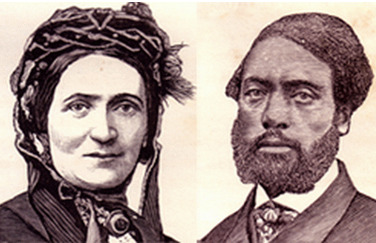
A later illustration of Ellen and William Craft.
William came up with the extreme idea. His wife, being so fair skinned, could dress up like a man, claim William was “his” slave and they would gradually travel north to the freedom that lay in Philadelphia. Initially it sounded insane to Ellen but knowing how frequently she was mistaken for a white woman, she gradually accepted that the plan might actually work. She sewed a set of men’s clothing, they got their hands on a top hat and a pair of green glasses, and they asked their masters for a few days leave for the upcoming Christmas holiday. They knew they were “favorite slaves” and their request would be approved. Together they pieced together the disguise. Ellen, dressed in men’s clothing, would have her arm in a sling to hide the fact that she could not write. She would have bandages wrapped around much of her smooth face to hide that there was no beard and also to strengthen their story that the “gentleman” was ill and traveling north for medical care. This also ensured that conversation would be limited making it easier for her to hide her voice. William cut Ellen’s hair short and on December 21, 1848 the pair bought a ticket at the Macon train station and headed for Savannah, a 200 mile journey and the first leg of their “desperate leap for liberty.”

Illustration of Ellen dressed as a man.
The Craft’s first step was complete, but they almost never made it to step two. Once on the train William had to travel in the “negro car” and it was there that he encountered his first shock of the trip. Walking along the platform was the owner of the shop where William made cabinets. He spoke to the ticket seller and then began peering through all the windows searching the cars. Shrinking in his seat, the pair was saved by the bell, clanging to announce the train’s departure just before it pulled away from the station. William had a close call, but Ellen had one of her own in her car. Looking away from the window she turned back to discover that she had someone riding with her, a close friend of her master who had known Ellen for many years. It must have been a shocking jolt but her fears were put to rest when the man greeter her with a friendly “It is a very fine morning, sir.” Ellen was already feigning illness, but she then pretended to be deaf for several hours to avoid interacting with the familiar man. Both Ellen and William were safe.
Once the Crafts arrived in Savannah the next leg of their escape was to board a steamship bound for Charleston, South Carolina. The trip was marked with numerous encounters with people who never caught on that they were witnessing a huge plan unfolding before them. One morning found them in the company of the captain who warned them over breakfast to steer clear of those “cut-throat abolitionists” up north. At one point during the trip a military officer scolded Ellen when he overheard her saying thank you to William, and at another point a slave trader tried to purchase William from Ellen and take him back down south. They arrived in Charleston safely and spent the night at a hotel where Ellen’s fictitious illness and upper class appearance got them the highest quality care, an excellent room, and a table in the dining area.
It may have seemed like their journey was easy, but the truth is that at every stop, and with every step, the Crafts were perilously close to being discovered. As they made the dangerous journey to Philadelphia they were constantly surrounded by people and employees on every train, steamship, and ferry meaning Ellen could never let her deception waver. Southerners knew people were working to secretly free their slaves and they took steps to try to make any escape as difficult as possible. At one stop slave owners were required to write the names of their slaves in order to prove ownership, something Ellen had been able to avoid doing with her arm in the sling. One ticket seller however refused to sign for her, trapping them with no clearance to board their next ship. Their salvation came from a friendly ship captain who saw the stubborn seller and personally intervened to vouch for the pair being slave owner and slave. They were finally allowed to board unhindered. In Baltimore the Crafts were detained at a train station and told they had to appear before authorities to have slave ownership verified. Trapped with little to no hope an officer then approached the clerk and said “He is not well, it is a pity to stop him.” before imploring him to tell the conductor to “let this gentleman and slave pass.” They were allowed on the train and the next morning, on Christmas Day, Ellen and William stepped off the train and into the streets of Philadelphia.
The Crafts did not linger long in Pennsylvania and after obtaining temporary lodging from an abolitionist network the pair moved to Boston where they settled in the free black community on the north side of Beacon Hill. Ellen became a seamstress and William was able to resume his trade as a cabinet maker. Business thrived, the pair were married in a Christian ceremony, and over the next two years they made numerous public appearances speaking out against slavery and telling their stunning tale of escape.

Illustration of Beacon Hill in 1850.
After two years of freedom the Crafts probably assumed they were safe, but everything changed in 1850 with the passing of the Fugitive Slave Act. The highly controversial move struck terror into the not-yet-healed hearts of all escaped slaves requiring that they be captured and returned to their masters. Officers would be rewarded for capturing any slaves, penalties for aiding fugitives were increased, and residents and law enforcement of free states were now required to cooperate in the capturing and returning. Within a month of the act passing Ellen and William’s former master sent bounty hunters to Boston to track them down and bring them back.

Amazingly, Ellen and William were able to avoid the bounty hunters by moving to safe houses until they could once again flee. This time the journey wasn’t only across state lines, it was across the ocean. Moving up to Maine and through to Nova Scotia the Crafts boarded the Cambria, a ship bound for England. The next dry land they stepped on was in Liverpool and as William later stated, “It was not until we stepped ashore at Liverpool that we were free from every slavish fear.”
The Crafts spent nineteen years in England where they learned to read and write, had five children, spoke in public lectures about their escape from slavery, and became active in reform organizations. It was in 1860 that their account of their unbelievable escape was published under the title Running a Thousand Miles for Freedom.
When the Civil War ended and slaves were finally emancipated Ellen was able to locate her mother and she paid for her to relocate to England. But, they were still not done moving. In 1868 Ellen, William, Ellen’s mother, and three of their children moved back to the states and returned home to Georgia. In 1870 they were able to purchase 1800 acres of land and three years later they founded the Woodville Co-operative Farm School for the education and employment of former slaves. Sadly, it was not open for long and was forced to closed due to dropping prices of crops and the discrimination against former slaves that still festered long after the war.
In 1890 Ellen and William Craft were again on the move, moving in with their daughter Ellen and her husband, Dr. William D. Crum in Charleston, South Carolina. The elder Ellen would not have much time to enjoy her new home, she passed away just one year later and, as per her request, was buried under her favorite tree. William remained in the home until his death on January 27th 1900.

The grave of William Craft.
The story of slavery is one of the most sickening to mark the pages of American history. Among the unfathomable horror there is the story of Ellen and William Craft, two people who through their sheer brilliance and determination were able to defy every evil placed in their way and obtain the life of freedom that they dreamed of.
#husheduphistory#featuredarticles#history#CivilWar#CivilWarHistory#GeorgiaHistory#PhiladelphiaHistory#BostonHistory#EllenCraft#WilliamCraft#escapingslavery#escapedslaves#FugitiveSlaveAct#mastersofdisguise#hiddeninplainsight#geniusplan#brilliant#historyofslavesinamerica#forgottenhistory#amazinghistory#slaveryinamerica#uglysideofhistory#greatescape#amazingstory#truestory#freedom#knowtheirnames#knowtheirstory#africanamericanhistory#bravery
0 notes
Photo
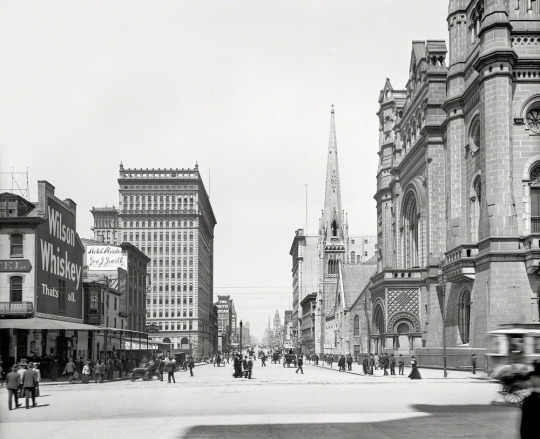



Fascinating Historical Photos Of Philadelphia From The Early 20th Century
#philadelphia#Pennsylvania#Pennsylvaniahistory#history#philly#philadelphiahistory#discoverphilly#cityskyline#cityscape#iconic#urbanphotography#vintagephilly#oldphiladelphia#historicalphotos#philadelphiaarchitecture#townhouses#phillyhistory#cityphotography#historicalplaces#historicalsite#historicalarchitecture#architecture
0 notes
Photo

꧁“And in her smile I see something more beautiful than the stars.”꧂ . . . . #Phillyengagement #engagement #engagementphotos #philadelphia #philaengagement #phillyengagement #philaphotographer #phillyphotographer #engagementportraits #portraitphotography #portraits #philadelphiacouple #truelove #engagmentphotography #phillyvenue #philadelphiawedding #philadelphiahistory #museumweddings #corporateevents #modernluxuryweddings #philadelphiacatering #finearts #uniquevenue #greenweddingshoes #stylemepretty #somartha #architecturejunkie #citywedding #nybride #whartonalumni (at Philadelphia Museum of Art) https://www.instagram.com/p/B5W6s0QnDQ3/?igshid=1kkrm7wcvycmq
#phillyengagement#engagement#engagementphotos#philadelphia#philaengagement#philaphotographer#phillyphotographer#engagementportraits#portraitphotography#portraits#philadelphiacouple#truelove#engagmentphotography#phillyvenue#philadelphiawedding#philadelphiahistory#museumweddings#corporateevents#modernluxuryweddings#philadelphiacatering#finearts#uniquevenue#greenweddingshoes#stylemepretty#somartha#architecturejunkie#citywedding#nybride#whartonalumni
0 notes
Photo
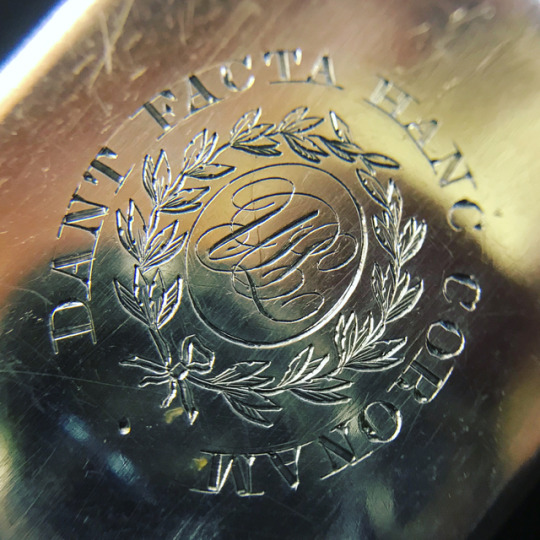
Sometimes, as an antique dealer, you can find something that is so intriguing that it can take over your whole day. I recently found this solid silver punch ladle that was made by the important and early Philadelphian silversmiths Chaudron’s & Rasch between 1809 and 1813. It is monogrammed with the initials UPL and the Levy family motto of DANT FACTA HANC CORONAM (deeds gave this crown) .... could these initials be for Uriah P Levy? Uriah was A naval officer, real estate investor and a philanthropist, who rose up the ranks, from a cabin boy to eventually become America’s first Jewish Commodore of the Navy. During this time he was instrumental in abolishing flogging from the U.S. Navy. If this is Uriah’s punch ladle, then it is a very important piece of silver indeed. My day has now been taken over with contacting museums, that hold collections of his items, to attempt to verify the monogram. It’s very exciting to see what comes across my desk on a daily basis! #lovemyjob #antiquedealer #brisbaneantiques #coulditbe #possibility #fingerscrossed #uriahplevy #levy #upl #jewishhistory #americanhistory #americannavy #monticellohouse #antiquedealersofinstagram #1809 #1813 #philadelphiahistory (at The Antique Guild)
#philadelphiahistory#fingerscrossed#uriahplevy#jewishhistory#1813#antiquedealer#levy#americannavy#americanhistory#brisbaneantiques#coulditbe#lovemyjob#monticellohouse#antiquedealersofinstagram#upl#possibility#1809
3 notes
·
View notes
Text

"A token of love from me, to thee."
We're celebrating Sarah Mapps Douglass (1806-1882), whose birthday was yesterday, on this #floralFriday. Sarah was an artist, an activist, an educator, and a prominent Quaker member of the Philadelphia African-American elite community.
Her paintings in the Amy Matilda Cassey friendship album (ca. 1833) are considered the earliest surviving signed artworks by an African-American woman.
81 notes
·
View notes
Photo

@independencenps social media has ceased due to the Federal shutdown. This is a photo of the rear library entrance and it is chock full of fun #architectural features: #ioniccolumns (those are the ones with the scrolls) #keystone #archwindow #detils // #savingplaces #thisplacematters #philadelphia #philadelphiahistory #historicphilly #historicphiladelphia #greekrevival (at Philadelphia, Pennsylvania) https://www.instagram.com/p/BssbXwuA6cS/?utm_source=ig_tumblr_share&igshid=14sn1396ffm8l
#architectural#ioniccolumns#keystone#archwindow#detils#savingplaces#thisplacematters#philadelphia#philadelphiahistory#historicphilly#historicphiladelphia#greekrevival
0 notes